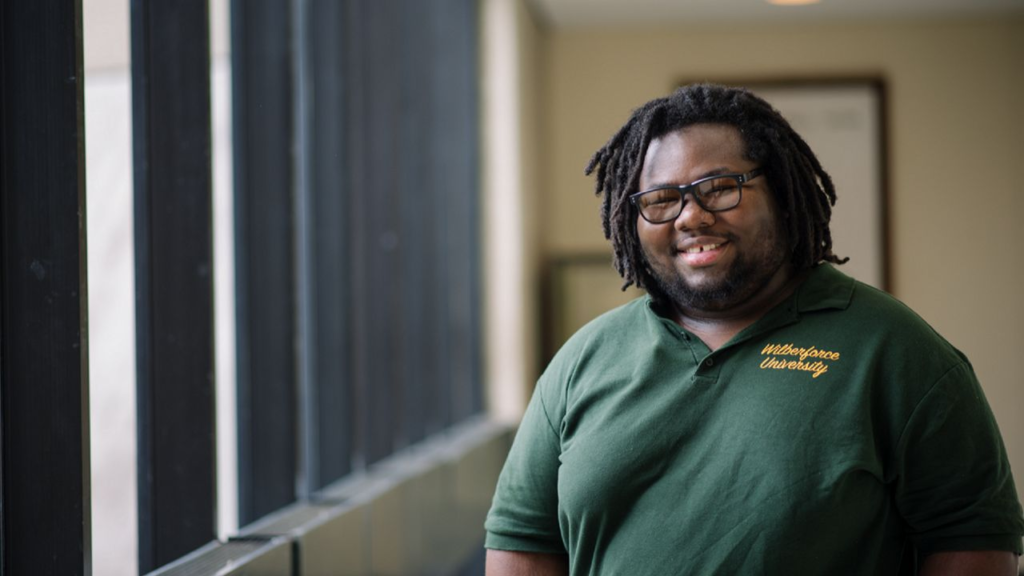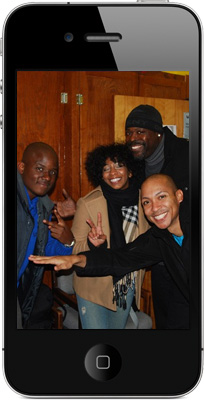Get the best experience and stay connected to your community with our Spectrum News app. Learn More
Continue in Browser
Get hyperlocal forecasts, radar and weather alerts.
Please enter a valid zipcode.
Save
WILBERFORCE, Ohio — JaJuan Dillon had several reasons for transferring to Central State University a few years ago, but one in particular took precedence.
The 25-year-old communications major listed several concerns common among college-bound kids, such as the quality of the school’s academic programs, the cost of tuition, and the proximity to his family back in Indianapolis.
But for Dillon, the biggest factor was wanting to surround himself with people from backgrounds and cultural experiences similar to his own.
Central State — about 20 miles from Dayton — is a historically Black college or university, also known as an HBCU. Dillon is African American.
HBCUs first appeared in the United States in the mid- to late-19th century around the time of the Civil War. They aimed to provide safe learning places for African Americans in areas across the country.
The institutions of higher education — which now number about 99 in total — offered access to education and training that would allow Black people, many of whom were former slaves, to strive for a better future.
“So, imagine people coming together in the heart of the enslaved movement and having the audacity to believe they could establish a place of higher learning for themselves,” said Elfred Anthony Pinkard, the 22nd president of Wilberforce University, another HBCU.
Wilberforce is the nation’s oldest private, historically Black university owned and operated by African Americans.
The university was founded in 1856, a period of American history in which many people of African descent were enslaved. It was also a period when the education of African Americans was not only socially prohibited but also illegal in some places.
Slavery was outlawed in Ohio, but that doesn’t mean the local educational environment was open and welcoming to Black people, Pinkard said.
The university’s namesake is 18th century abolitionist William Wilberforce, a white man who famously said, “We are too young to realize that certain things are impossible… So, we will do them anyway.”
The outbreak of the Civil War forced the school to close temporarily. But in March 1863, the Rev. Daniel A. Payne, a bishop in the African Methodist Episcopal church, purchased the land and the buildings, and the university was reopened later that year.
Payne opened the doors of the university with six students and became the first person of African descent to be the president of an American institution of higher learning.
“They were visionary because they thought of themselves and their children, and their children’s, children’s children. And here we are today — 167 years later,” Pinkard said.
Central State and Wilberforce are connected at the academic hip. For many years, Central State operated as a department at Wilberforce, but with a separate board of trustees. The initial focus of Central State was to provide vocational and teacher education.
The school that is now Central State became a separate, state-funded institution in 1947. U.S. Route 42 separates the properties in rural Ohio.
Central State has more than 6,000 undergrads today.
Dr. Anthony Milburn, an associate professor in the college of Humanities, Arts, and Social Science at Central State, described the purpose of HBCUs as providing “safe spaces for the acquisition of education” for Black and African American students.
“We prepare people to be leaders in the community,” he said. “That’s part of the entire purpose of most institutions of higher learning, but it’s especially important when understanding the purpose of HBCUs if you look at ideas put out by the likes of W. E. B. Du Bois.”
Du Bois is a celebrated African American sociologist and historian. He taught at Wilberforce in the late 1890s.
Alexander Murphy, one of Wilberforce’s roughly 500 undergraduate students, chose the school largely because of its historic significance. The school’s student government president said he wanted to follow in the footsteps of some of the prominent Black leaders who attended or worked at Wilberforce over the past two centuries.
“I want to make an impact (of my own),” the Detroit native said.
Citing a list of prominent Black luminaries, he added, “I attend the university where Bayard Rustin, Leontyne Price, James H. McGee, Charity Adams Earley, and Dorothy Vaughn walked the halls, and where W. E. B. DuBois taught.”
Some people wonder why HBCUs still exist today, Milburn said. The Ohio State University graduate, who is Black, noted that many college campuses are as diverse as ever.
As a percentage of the entire student population, non-white student attendance at all colleges and universities has increased 185.5% since 1976, according to Education Data Initiative. That same data shows the Black or African American student population has increased by 33% percent since that same year.
But while historical attendance may be up, success is not. Black or African American students in bachelor’s programs have a five-year graduation rate of 40.5%. And only 11.1% of college graduates are Black or African American.
By comparison, white or Caucasian students in bachelor’s programs have a five-year graduation rate of 62.2%. The rate among Asian/Pacific Islander students is 69.3% while the number is 41.5% for Hispanic and Latino students.
Milburn attributed those stats in part to a “lack of hunger for the success of the other person” at predominantly white institutions such as Ohio State.
The historian voiced pride in being an OSU Buckeye, but he attributed part of his success to the group of Black faculty members and campus leaders who “wrapped their arms around (him).” They provided him, and other students, with an environment where he felt comfortable speaking his mind and existing as an African American, he said.
Milburn thinks many predominantly white institutions are not equipped to offer that type of holistic, hands-on support.
“The whole idea of a safe environment is where students can say what’s on their mind most of the time, and they get strong feedback,” he said. “Sometimes that feedback is hard, but it’s always intended to be something that will allow that student to grow into a leader.”
Milburn compared an HBCU campus to a family dynamic. He referred to the faculty as big brothers, sisters, uncles, and aunts.
According to the Thurgood Marshall College Fund, HBCUs graduate 80% of Black judges, 50% of Black lawyers, 40% of Black members of Congress, and 40% of Black engineers.
Data from the United Negro College Fund shows about 25% of African Americans with science, technology, engineering, and math (STEM) degrees graduated from HBCUs.
“Many (HBCU faculty members) came from similar backgrounds and we see them as a reflection of the future, so we bend over backwards to crazy levels of contortions to make sure that they have every opportunity to find success,” Milburn said.
Dillon, who’s set to graduate this year, said Central State’s professors and campus leaders have a passion for helping students succeed. He credited the school’s “stable and nurturing environment” for his academic success.
“I feel more focused here than ever before,” Dillon added.
Ohio HBCUs support next generation of Black leaders – Spectrum News 1










More Stories
Midtown announces AP African American Studies for upcoming year – the Southerner Online
Wearing black badges in protest against Waqf Bill, 24 people in Muzaffarnagar asked to furnish a bond of 2 lakh each – Hindustan Times
Black veterans sound the alarm over military DEI purge – The Hill